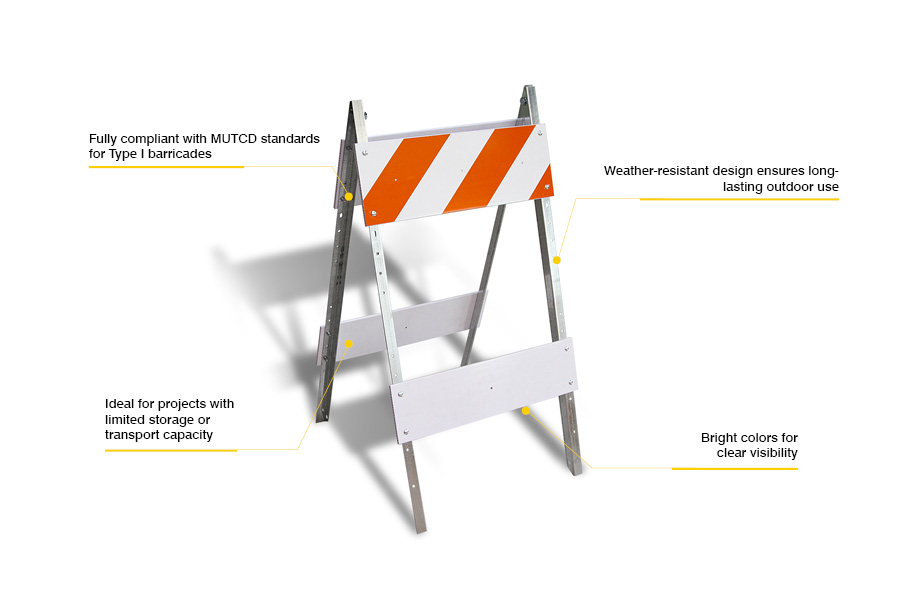
The Type I barricade is designed to direct and control pedestrian and vehicular traffic in temporary work zones or event spaces. Its single reflective panel provides clear guidance, ensuring visibility and safety in various conditions. Made from durable, weather-resistant materials, it can withstand outdoor elements while maintaining its functionality.
The barricade’s foldable design allows for quick deployment and easy storage, making it ideal for situations requiring fast setup. It is also compatible with sandbags or weights to improve stability in windy conditions or on uneven surfaces. These features make the Type I barricade a cost-effective and practical solution for temporary traffic control.
*We respect your confidentiality and all information are protected.
| Board Material | PE ABS |
|---|---|
| Frame Material | Galvanized Steel |
| Reflective Film | EG/HIP/DG/Customizable |
Unfold the barricade and place it in the desired location.
Ensure the reflective panel is facing oncoming traffic for maximum visibility.
Add sandbags or weights if the barricade will be used in high-wind areas or uneven terrain.
Regularly check the barricade for damage or wear, especially the reflective panel.
Clean the reflective surface to maintain visibility.

A Type 1 barricade is a traffic control device used to warn or direct traffic in temporary work zones, road closures, or construction areas. It features a single reflective panel (usually orange or white) mounted on a lightweight frame. Type 1 barricades are designed for low to moderate traffic areas and are often used for shorter-term applications.
Type I Barricade
Design: A lightweight, foldable barricade with one reflective panel, suitable for low-traffic areas.
Application: Often used in urban or short-term construction zones.
Type II Barricade
Design: A larger, more robust barricade with two reflective panels, providing greater visibility.
Application: Commonly used for moderate traffic control in construction sites and road work.
Type III Barricade
Design: The largest barricade, typically with three reflective panels, providing maximum visibility.
Application: Used in high-traffic areas or hazardous zones where maximum warning is needed.
The Occupational Safety and Health Administration (OSHA) sets standards for barricades used in construction and industrial settings to ensure worker safety. OSHA standards for barricades are outlined in 29 CFR 1926.200 and state that:
Barricades must be visible and clearly mark hazards to prevent accidents or unauthorized access.
The barricade must have high-visibility materials, such as reflective sheeting, and be designed to withstand environmental conditions.
Barricades must be stable enough to remain upright and prevent injury if struck by vehicles or equipment.
OSHA regulations require that warning barricades are properly maintained and positioned to protect both workers and the public.
While stable under normal conditions, sandbags or weights can be added for extra stability in windy environments.



Copyright ©2025, OPTRAFFIC. All rights reserved.
